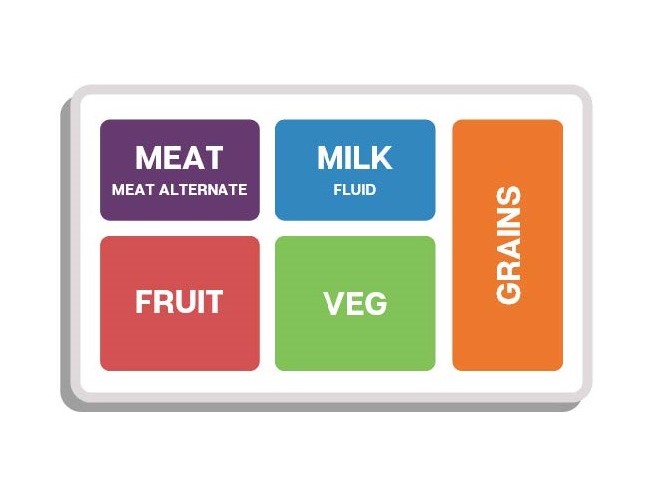What makes a reimbursable lunch?

Reimbursable meals are the (whole grain) bread and butter of school nutrition programs. If you're new to school food service, this post is for you!
What exactly is a reimbursable meal?
A reimbursable meal has to meet certain requirements so your school gets money back from the United States Department of Agriculture (USDA). The USDA is the government branch that oversees child nutrition programs. The meal has to meet calorie and nutrient requirements. It also has to meet portion size requirements for different food components. These requirements differ by grade groups: K-5, 6-8, and 9-12.
Okay, what is a food component?
In school meal programs, food components include:
- Fruit
- Vegetables
- Grains
- Meat/Meat Alternates
- Milk (fluid)
There's lots more to know about each food component. We will dig into these in future blog posts!
For now, let's talk about how to identify a reimbursable meal. If you're a line server or cashier, this will likely be part of your job duties.
How do I recognize a reimbursable meal?
There are two ways that schools can serve meals.
- Option 1 is called "straight serve" -- all students receive all of the food components. With straight serve, every tray will be reimbursable.
- Option 2 is called "offer versus serve" -- students are able to decline some of the food components. This serving model is required for grades 9-12.
With OVS, a meal is reimbursable as long as it includes at least 3 food components; the tray must also include at least 1/2 cup of fruit and/or vegetable.
Ask yourself these three questions:
1. Is there a fruit or vegetable on the tray? If not, prompt the student to select a fruit and/or vegetable.
2. Is there at least 1/2 cup of fruit and/or vegetable on the tray? If not, prompt the student to take enough to reach 1/2 cup.
3. Are there 2 other components on the tray? If not, the student should select additional items so they have at least 3 food components.


